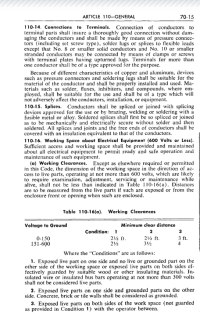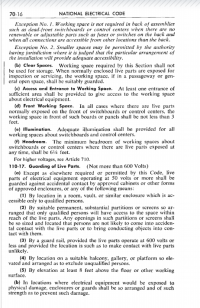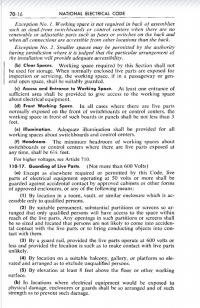Funny you should ask.
Old equipment for the 2083ph 1600A Service Disconnect had a clearance of 30" and the new gear will make it 28" plus we are now in a flood zone. What do you do?
What is the potential voltage to ground for any single phase of a 208 volt three phase electrical service?
To determine the potential voltage to ground for any single phase of a 208-volt three-phase electrical service, we need to consider the configuration of the three-phase system. A 208-volt three-phase service is typically associated with a wye (Y) configuration, where the line-to-line voltage is 208 volts, and the voltage from each phase to the neutral (or ground, if the neutral is grounded) can be calculated.In a wye-connected three-phase system, the line-to-neutral voltage (also called phase-to-neutral voltage) is related to the line-to-line voltage by the formula:
Vphase-to-neutral=Vline-to-line3V_{\text{phase-to-neutral}} = \frac{V_{\text{line-to-line}}}{\sqrt{3}}V_{\text{phase-to-neutral}} = \frac{V_{\text{line-to-line}}}{\sqrt{3}}
Given:
- Line-to-line voltage = 208 volts
- 3≈1.732\sqrt{3} \approx 1.732\sqrt{3} \approx 1.732
Vphase-to-neutral=2083≈2081.732≈120 voltsV_{\text{phase-to-neutral}} = \frac{208}{\sqrt{3}} \approx \frac{208}{1.732} \approx 120 \, \text{volts}V_{\text{phase-to-neutral}} = \frac{208}{\sqrt{3}} \approx \frac{208}{1.732} \approx 120 \, \text{volts}
Therefore, the potential voltage to ground for any single phase of a 208-volt three-phase electrical service, assuming a wye configuration with a grounded neutral, is approximately 120 volts.Note: This assumes a standard wye-connected system with a grounded neutral, which is common in 208V three-phase services (e.g., 208Y/120V systems). If the system is a delta configuration or ungrounded, the voltage to ground may not be well-defined or could differ, and additional information about the system grounding would be needed. If you have a specific configuration in mind (e.g., delta or corner-grounded delta), please clarify, and I can provide a more tailored answer.
That being said, conditions 1,2,3 require 36" clearance in front. Your situation goes from bad (30") to worse (28"). That is a reduction of 22.2%. I already said that the flood problem is risk worth taking.
I would not approve the proposed equipment, even at 30" clearance much less 28". But that's easy for me to say in that I worked for LA County and there is always someone that will approve it if they complain to the right people.

 link.nfpa.org
link.nfpa.org






